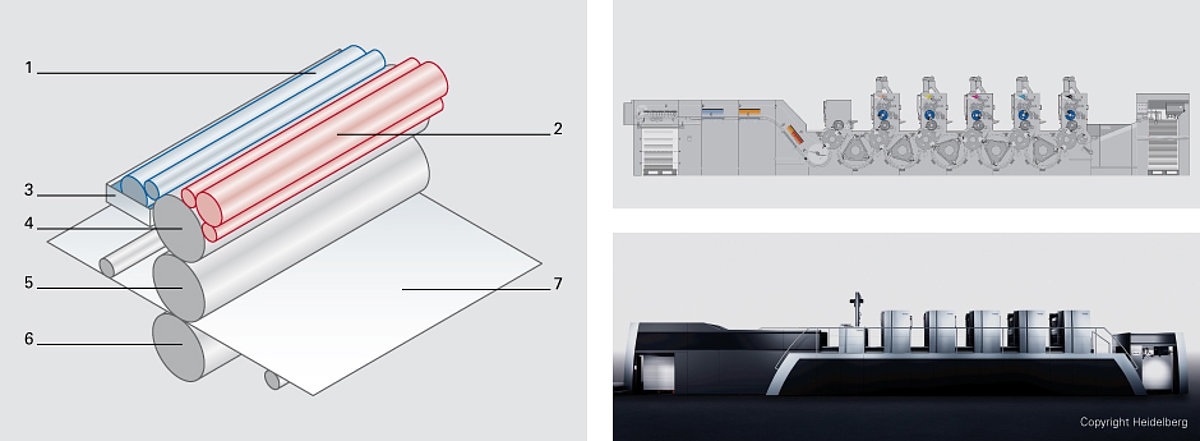Offset printing
Offset printing is an indirect flat printing process that derived from stone printing and is based on the different wetting behaviours of different substances. The designation as an indirect printing process or the term offset means that printing does not occur directly from the printing plate (i.e. offset plate) onto paper, but that the ink is first ‘transferred’ via a further roller, the rubber blanket cylinder. Depending on the technology, the printing form has to be moistened. The light fountains in the printing paper that are created in this way can lead to unwanted changes in dimensions. Printing on film/foil or aluminium cannot be resolved via classic offset printing. In the sheet-fed offset process up to 30,000 sheets can be printed per hour, whereas up to 75,000 can be done in the reel-feed offset process, and twice as many sections printed per hour with double use. An endless technology does not exist in the offset process yet. Reel-fed offset is also based on mounted plates which always have a small ‘push’. Thus offset is almost exclusively used for folding container cuts in packaging printing and less in flexible packaging.
Recognition characteristics: the edge sharpness of text, lines and areas is very high. An incorrect screen angle leads to a so-called Moiré: an actually homogeneous surface then displays a periodically recurring structure. However, moirés can develop from textiles through reproduced object structures, e.g. from textiles. The high resolution of the offset process allows the use of frequency-modulated screening. This means that moirés can certainly be avoided.

5 Rubber blanket cylinder, 6 Printing cylinder, 7 Substrate
